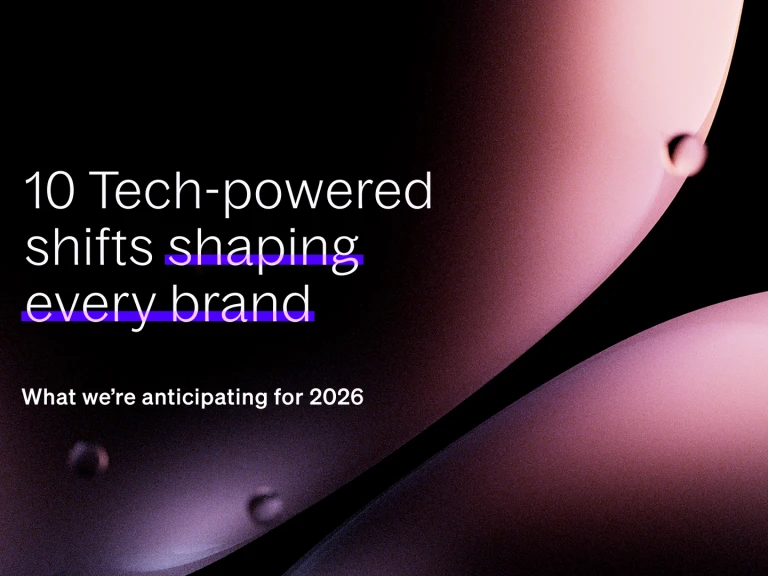Introduction: Why Design Thinking Matters
Design thinking has gained traction as a method that blends creativity with strategy to solve complex problems. A 2017 study by Kleinsmann et al., “Capturing the Value of Design Thinking in Different Innovation Practices,” delves into how organizations employ this approach to foster innovation. The study highlights four key images of design thinking: value-driven, experience-driven, purpose-driven, and vision-driven innovation. Each offers unique insights into how design thinking is applied to early-stage innovation projects.
At Juicebox Indonesia, design thinking isn’t just a concept—it’s a strategic approach we apply to create human-centered products, communications, and go-to-market strategies. By leveraging methods like user research and iterative prototyping, we help brands achieve meaningful connections with their audiences.
Simplifying Kleinsmann et al.’s Research
Four Images of Design Thinking
The Kleinsmann study categorizes design thinking into four distinct "images" based on innovation goals, challenges, and applications:
Value-Driven Innovation:
Goal: Develop strategies for long-term business survival.
Challenge: Reframing traditional business models to compete in fast-changing markets.
Application: Prototyping and collaboration are used to align stakeholders and build sustainable value propositions.
Experience-Driven Innovation:
Goal: Enhance user experiences by involving users in the creation process.
Challenge: Discovering and articulating user value to build a strong business case.
Application: Co-creation with stakeholders and creating an atmosphere of play and experimentation.
Purpose-Driven Innovation:
Goal: Deliver well-designed, complex products or services.
Challenge: Integrating diverse knowledge into a coherent design.
Application: Prototyping early concepts to ensure alignment between user needs and business objectives.
Vision-Driven Innovation:
Goal: Drive positive societal change with future-proof strategies.
Challenge: Navigating uncertain futures and defining sustainable paths for innovation.
Application: Crafting provocative visions and engaging stakeholders to align on future opportunities.
A Deeper Look at Kleinsmann et al.
Let’s undertake a more thorough examination of Kleinsmann’s academic contributions. Her research offers significant insights into the application of design thinking in early-stage innovation practices, building on and extending foundational work in both design and management literature. By bridging theoretical concepts and practical application, her work provides clarity and utility for organizations seeking to innovate effectively.
Her research draws heavily from foundational theories in the field. Herbert Simon’s paradigm of design as a process of satisficing, which emphasizes iterative problem-solving over optimization, serves as an underlying principle. Kleinsmann extends this by demonstrating how these iterative approaches align with organizational objectives in practice. Similarly, Nigel Cross’s exploration of designerly ways of knowing—especially the use of inductive, deductive, and abductive reasoning—is central to her framework, showing how these cognitive strategies drive real-world innovation. Building on the ideas of Lawson and Dorst, she incorporates the concept of design expertise, focusing on how experienced designers integrate diverse inputs and navigate uncertainty to deliver coherent solutions.
Roger Martin’s work on integrative thinking, particularly in addressing complex, wicked problems, is also evident in Kleinsmann’s frameworks. She further contextualizes his ideas by providing actionable methodologies that apply these principles to innovation settings. Additionally, Roberto Verganti’s insights into design-driven innovation, with its focus on creating new meanings and visions for the future, resonate strongly in her vision-driven innovation framework, emphasizing the transformative potential of design thinking in addressing grand societal challenges.
Kleinsmann’s primary contribution lies in categorizing the applications of design thinking into four distinct “images”—value-driven, experience-driven, purpose-driven, and vision-driven innovation. These categories provide a structured way to understand how design thinking aligns with various innovation goals and contexts. To bridge the gap between designers and non-designers, she developed a card deck of 48 design activities, creating a shared language to facilitate collaboration across disciplines. This tool encourages stakeholders to align their understanding and expectations, which is essential in multidisciplinary innovation environments.
One of the standout aspects of Kleinsmann’s research is her focus on early-stage innovation. She emphasizes the criticality of design thinking during the ideation and problem-framing phases, where ambiguity and uncertainty are highest. Her findings stress the importance of tailoring design thinking approaches to the specific challenges at hand. For example, in value-driven innovation, she highlights the use of prototyping to synthesize diverse stakeholder knowledge, while in experience-driven innovation, co-creation workshops are pivotal for uncovering user values and preferences. This nuanced understanding allows organizations to apply design thinking more effectively to meet their objectives.
A core insight from Kleinsmann’s work is the emphasis on starting with a shared language. In collaborative teams, misalignment often hampers progress, and establishing common terminology and shared goals is essential. Reflection is another critical element of her framework. Teams are encouraged to regularly evaluate their processes and outcomes, adapting their strategies in response to changing challenges and deepening their understanding of the problem space. Visualization also plays a central role, with tools like sketches, prototypes, and storytelling fostering clearer communication and collaborative refinement of ideas.
Kleinsmann underscores the importance of alternating between divergence and convergence. Generating diverse ideas before narrowing them down to actionable solutions creates a balance that is central to effective design thinking. This iterative process ensures that teams do not rush into solutions but instead explore possibilities thoroughly before committing to a specific direction. Additionally, she emphasizes the need for empathy and contextual understanding. By deeply exploring user needs and the contexts in which they operate, teams can design solutions that resonate more effectively with their intended audience.
Her research also highlights the practical value of iterative testing. Engaging users and stakeholders early in the process, and gathering feedback at each stage, ensures that solutions remain grounded in real-world applicability. This approach also allows teams to refine their ideas incrementally, minimizing risks and increasing the likelihood of success.
In essence, Kleinsmann’s research bridges theory and practice, offering actionable strategies for organizations to integrate design thinking into their innovation processes. Her work emphasizes the importance of empathy, collaboration, and iterative refinement, providing a robust framework that helps teams navigate complexity and uncertainty while delivering meaningful outcomes. By aligning academic insights with practical tools, her research equips organizations with the methodologies needed to innovate effectively in today’s fast-changing environments.
Juicebox Indonesia: Applying Design Thinking to Product Strategy
Human-Centered Design in Action
Juicebox’s approach aligns closely with the frameworks described in Kleinsmann’s research. For us, human-centered design ensures that every strategy, prototype, and final product resonates with its intended audience. By starting with empathy and user insights, we build solutions that don’t just meet business goals—they exceed them.
The Capitaliz Case Study: A Design Thinking Success
In 2022, Succession Plus, a leading strategic advisory firm specializing in helping SME owners enhance business value for sale or succession, encountered a pressing challenge. Despite the proven success of their renowned 21-Step Business Succession & Exit Planning process, they faced significant scalability issues. The manual nature of their process required substantial time and resources, limiting the ability of their small advisor team to meet growing demand. This problem was compounded by their ambition to expand into international markets such as the US, UK, and India. Succession Plus realized that their traditional model needed a transformative overhaul to achieve their ambitious goals.
Recognizing an opportunity to innovate, Succession Plus partnered with Juicebox to explore how digital solutions could address these limitations. Juicebox identified the potential to transform the 21-step advisory process into a comprehensive digital platform that would not only scale their services but also enhance the value delivered to clients. The outcome was Capitaliz—a groundbreaking platform designed to digitize and automate the succession planning process while maintaining the integrity of the methodology that had earned Succession Plus its reputation.
The journey to create Capitaliz began with an extensive discovery phase. Juicebox conducted in-depth research to understand the existing advisory process, the pain points experienced by both advisors and clients, and the opportunities to introduce digital efficiencies. This involved mapping the customer journey in detail to pinpoint moments where technology could reduce friction, improve communication, and deliver insights more effectively. The goal was clear: to craft a digital solution that could replicate and enhance the expertise of Succession Plus while being accessible and scalable for a global market.
Designing Capitaliz required a meticulous approach to user experience and technical integration. Juicebox envisioned a platform that would not only simplify the 21-step process but also enhance it with intuitive design and real-time capabilities. A user-friendly onboarding process was a cornerstone of the project. It was crucial to ensure that new advisors and clients could quickly understand and benefit from the platform’s features. To achieve this, the team developed a step-by-step onboarding flow that educated users about the platform’s capabilities while demonstrating immediate value.
One of the most transformative aspects of Capitaliz was its integration with major accounting systems and global business data centers. By embedding real-time data capabilities, the platform provided advisors with accurate, up-to-date insights, reducing the need for manual data collection and analysis. This integration not only enhanced the speed of the valuation process but also improved the accuracy of business assessments, enabling advisors to focus on strategic recommendations rather than administrative tasks.
Prototyping played a critical role throughout the development of Capitaliz. Juicebox employed iterative design thinking methodologies to create wireframes and test them with real users. Each round of feedback led to refinements, ensuring the platform met the diverse needs of its users. The prototyping process helped uncover hidden challenges, such as ensuring the process maintained its depth of analysis while being streamlined for efficiency. These insights allowed the team to balance complexity with usability, crafting a tool that both advisors and business owners found intuitive and effective.
The results of this digital transformation were nothing short of remarkable. Capitaliz revolutionized Succession Plus’s business model, enabling them to expand their adviser network from just 15 employees to over 300 advisors globally. The platform successfully entered key markets, including the US, UK, and Australia, and supported an expansive client base. Most strikingly, the time required to complete a business valuation was reduced from an average of two weeks to just four hours—a 95% reduction in delivery time. This efficiency enabled the team to onboard and support over 570 SMEs, dramatically amplifying the reach and impact of their advisory services.
Capitaliz not only achieved its immediate objectives but also unlocked significant value for Succession Plus. The company experienced a substantial increase in market valuation, solidifying its position as an industry leader in succession planning and business valuation. This transformation stands as a testament to Juicebox’s expertise in applying design thinking to solve complex challenges, leveraging technology to deliver both innovation and tangible business outcomes.
Through empathy, creativity, and iterative problem-solving, Juicebox helped Succession Plus redefine its business model, scale its operations, and enter new markets with confidence. The story of Capitaliz is a vivid example of how design thinking can drive innovation, delivering measurable results while staying true to the human-centered values that underpin successful strategic engagement.
How Juicebox Innovates Through Design Thinking
Integrating the Four Images
Juicebox’s strategies often incorporate elements from all four images identified in Kleinsmann’s study:
Value-Driven: We align cross-departmental goals to ensure our strategies deliver growth where it matters most to business owners.
Experience-Driven: Stakeholder workshops and collaborative prototyping are staples in our human-centered design process.
Purpose-Driven: We use iterative design stages to align complex business and user needs.
Vision-Driven: Our projects often explore future trends to deliver forward-thinking solutions.
Tools and Techniques
Key methodologies in our toolkit include:
User-Centered Research: Surveys, interviews, and interactive presentation sessions.
Prototyping and Testing: Rapid iteration based on feedback.
Storyboarding and Visualization: Communicating ideas effectively to stakeholders.
Design Thinking as a Catalyst for Change
Kleinsmann et al.’s study underscores the transformative power of design thinking in innovation. At Juicebox Indonesia, this methodology influences everything we do, from crafting digital marketing strategies, to building world-class websites, to co-developing our customers’ products. By integrating empathy, creativity, and strategy, we help brands not just compete, but thrive.
Whether you’re a startup or an established brand, design thinking can unlock new opportunities and drive meaningful growth. Let’s collaborate to build solutions that matter.
Ready to go?
Are you ready to integrate design thinking into your product, communications, or go-to-market strategy? Contact Juicebox Indonesia today to start your innovation journey.









